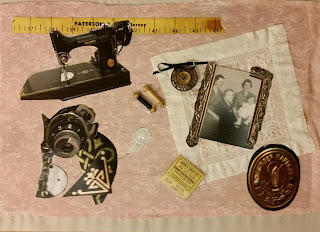Teaching a class in Mixed Media Collage last weekend, I used the digital projector in the room to show some examples of collage going back to the Cubists. Here is one by Georges Braque from about 1913:
One of the participants was inspired to produce this:
That is really pretty good! She tried out the pencil shading at the right and left, though not the quotations of parts of instruments that Braque drew. But the choice of papers, the cutting, and the placement, are all excellent.
The day also produced these collages from different participants (all are 10" x 15"):
Some tips that I've found useful for making collages:
One of the participants was inspired to produce this:
That is really pretty good! She tried out the pencil shading at the right and left, though not the quotations of parts of instruments that Braque drew. But the choice of papers, the cutting, and the placement, are all excellent.
The day also produced these collages from different participants (all are 10" x 15"):
Some tips that I've found useful for making collages:
- Use acrylic matte medium to glue down magazine pages and newspaper, thin decorative papers, etc.
- Use acrylic gel medium to glue down thicker materials such as fabric, and to embed three dimensional materials such as buttons.
- When everything is dry, coat the collage front and back with acrylic matter medium. This seals the front, and counteracts any warping that may occur on the back.




